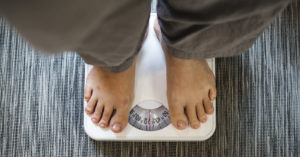Managing your weight and lean muscle mass is extremely challenging, especially if you are a beginner who’s just about to join the fields of fitness and nutrition.
By using our Total Daily Energy Expenditure (TDEE) Calculator you can find the estimated calories you burn per day.
My TDEE Stats:
Your Maintenance Calories
calories per day
calories per week
| Basal Metabolic Rate | calculated calories per day |
| Sedentary | calculated calories per day |
| Light Exercise | calculated calories per day |
| Moderate Exercise | calculated calories per day |
| Heavy Exercise | calculated calories per day |
| Athlete | calculated calories per day |
Ideal Weight: calculated
| G.J. Hamwi Formula (1964) | calculated |
| B.J. Devine Formula (1974) | calculated |
| J.D. Robinson Formula (1983) | calculated |
| D.R. Miller Formula (1983) | calculated |
BMI Score: calculated
| 18.5 or less | Underweight |
| 18.5 – 24.99 | Normal Weight |
| 25 – 29.99 | Overweight |
| 30+ | Obese |
Maximum Muscular Potential
Macronutrients
protein
fats
carbs
protein
fats
carbs
protein
fats
carbs
protein
fats
carbs
protein
fats
carbs
protein
fats
carbs
protein
fats
carbs
protein
fats
carbs
protein
fats
carbs
One of the most important principles to keep in mind is your total daily energy expenditure (TDEE), which is a parameter that will significantly help you in creating a solid plan to achieve your goals.
Fortunately, we provide the most efficient TDEE calculator to facilitate the process for you. However, make sure that you’re keeping track of your macros intake and degree of physical activity for accurate results.
Our TDEE calculator will make your life much easier by providing you with a starting baseline.
Combining the results of your total daily energy expenditure with other parameters, such as body mass index (BMI), caloric requirements, and macronutrient ratio will comprise the foundation of your fitness journey.
The Definition of TDEE Calculator
A TDEE calculator is a tool to help you estimate the number of calories you burn per day, which is an essential number to develop a nutritional/fitness plan.
Keep in mind that TEDD is subject to several factors, including age, gender, body type, diet, degree of physical activity, and genetics. Therefore, calculating this number by yourself is quite complicated, which is why we developed our TDEE calculator to remove one obstacle from your way.
There are several formulas used to calculate TDEE, but we base our data on the Mifflin-St Jeor equation, which is known to be the most accurate.
In one study, this equation was compared with other formulas based on the Harris-Benedict, Owen, world health organization (WHO), and more.
Experts found that the Mifflin-St Jeor equation has an error margin of around 10% of the resting metabolic rate (RMR), which is significantly accurate.
The formula used for TDEE calculators
Out of the variables cited above, the Mifflin-St Jeon formula takes into account:
- Gender
- Age
- Weight
- Height
By far, these are the most important factors that influence TDEE, which is why many nutritionists prefer this equation.
Here are the formulas used (based on gender):
- Men: 10 x weight (kg) + 6.25 x height (cm) – 5 x age (y) + 5
- Women: 10 x weight (kg) + 6.25 x height (cm) – 5 x age (y) – 161
Fortunately, you don’t have to worry about all the numbers and conversions involved, as all you need to do is fill in a few blanks in our TDEE calculator to get the results.
Check how to use this TDEE Calculator video at https://FitnessVolt.com/tdee-calculator/
How to interpret your TDEE results
Once you enter the information required in our calculator, you will instantly get the approximate results of your TDEE.
Fortunately, our platform is very intuitive and takes into consideration user-experience, so we provided all the information needed under each result.
Here are a few definitions:
- Maintenance calories – this number reflects how many calories you need to consume a day in order to maintain your bodyweight.
- Ideal weight – as it implies, ideal weight is the recommended weight you should aim to reach. This parameter takes into consideration your height and weight, which becomes less accurate if you gain substantial muscle mass.
- Calories per week – this is the number of calories you need to consume in one week to achieve your fitness goals.
- Macronutrients – these are the main foods you consume (e.g., carbs, fat, protein), which eventually determine your daily caloric intake.
- Body mass index – this is an international score based on your height and weight that’s often used by doctors. BMI is also used to estimate your ideal weight.
According to the World Health Organization (WHO), here are the definitions of each range in the BMI score:
- 5 or less = underweight
- 5 – 24.9 = normal weight
- 25 – 29.9 = overweight/pre-obese
- 30 – 40 = obese
- 40 or more = morbidly obese
How many calories are you consuming per day?
The number of calories you consume per day can be measured by calculating your macronutrient ratio and the amounts of food you eat.
Each macronutrient contains a specific number of calories:
- Carbohydrates (sugars) – 1 gram has 4 calories
- Protein – 1 gram has 4 calories
- Lipids (fats) – 1 gram has 9 calories
As you can see, fat contains the most calories per gram compared to other macronutrients; however, several low-carb, high-fat diets (ketogenic diet) were shown to be extremely beneficial for weight loss.
Additionally, artificial sweeteners, refined sugar, and hydrogenated fats are more difficult to metabolize for the body, which may lead to further weight gain.
The main Macronutrients
Carbohydrates
Carbohydrates, or sugars, are the major source of energy to the body; these molecules will get broken down into simpler forms of sugar such as fructose and glucose to be used in different metabolic pathways.
Lipids (fats)
Contrary to popular belief, not all fats are bad to the body. In fact, these molecules are an essential part of our composition, making up every cell.
Protein
Proteins are involved in several physiological roles, including the catalyzation of biochemical reactions, muscle growth, and energy production.
By far, the most important role of proteins is their enzymatic action.
Fiber
Fiber is a complex carbohydrate that helps improve the health of our gastrointestinal tract.
Vitamins
Vitamins are the pillars of all biochemical reactions, and our cells cannot survive without these vital compounds.
Minerals
Minerals such as sodium, potassium, and calcium are incredibly important to maintain homeostasis. Any disruption of this balance can lead to dire consequences.
Water
65-70 percent of the body’s weight is composed of water; it is involved in every physiological process, and citing each role of this marvelous molecule is beyond the scope of this article.
The concept of energy expenditure
This concept translates to how many calories your body burns per day.
As we mentioned earlier, this parameter is dependent on several factors, including basal metabolic rate, degree of physical activity, body type, gender, and genetics.
For this reason, it may be quite challenging to precisely measure your energy expenditure per day; however, an approximate number would suffice.
In general, your TDEE ranges between 1500 to 4000 calories, depending on the previously listed factors.
Example
Let’s say your goal is to lose weight. In this situation, you need to follow one simple role; burn more calories than you consume, and weight loss is inevitable.
Example:
A 30-year-old male with these physical characteristics:
- Bodyweight – 100 kg (220 lb.)
- Height – 1.85 cm (6 ft)
When measuring the energy expenditure of this subject using our TDEE calculator, we will have an approximate number to work with.
If this individual wants to lose weight, he must consume fewer daily calories than the calculated number to force the body to burn the stored macronutrients (e.g., glycogen, fatty acids).
Note that burning an extra 7000 calories leads to a 1 kg (2 pounds) of weight loss.
The benefits of calculating your TDEE
In order to achieve any fitness goal, one must calculate the number of calories his/her body utilizes per day.
You see, most beginners create a fitness plan without taking into consideration their TDEE. As a result, they start consuming calories in an unplanned fashion, leading to either the underestimation or overestimation of their bodies’ needs.
One common mistake that most newbies make is overcompensating during meals, thinking they burned too many calories while working out.
This issue could be avoided if you measure your TDEE, track your macros, and create a comprehensive plan that includes all the necessary parameters.
Another example would be individuals who are interested in mixed martial arts (MMA) who need to maintain a balanced weight to avoid a decrease in mobility and flexibility.
By calculating their TDEE, martial artists will be able to maintain their weight and muscle mass in the appropriate range.
Frequently asked questions about TDEE calculator
What is TDEE?
Total daily energy expenditure, or TDEE, refers to the number of calories the body burns during one day.
How can I calculate my TDEE?
The process of calculating your TDEE is complicated due to the number of variables in play. However, our TDEE calculator makes your life easier by giving you accurate results in a matter of an instant.
How accurate is your TDEE calculator?
Our TDEE calculator has an error margin of 10%, which is exceptionally high compared to other formulas.
However, the accuracy of our calculator depends on the honesty of your input.
How many calories should I burn daily?
The number of calories you need to burn per day is strictly dependent on your fitness goals. If you want to lose weight, you need to be in a state of caloric defect. If you want to bulk, you should consume more calories than your body burns.
My goal is to bulk, and I don’t know how many calories to consume
To maintain the optimal function of your internal organs, it is recommended to avoid the sudden increase in weight.
If your goal is to bulk, start by adding 250 calories above your TDEE per day.
Will your TDEE calculator include exercise as a parameter?
Yes, our calculator includes several parameters, including exercise, to produce the most accurate TDEE result.









